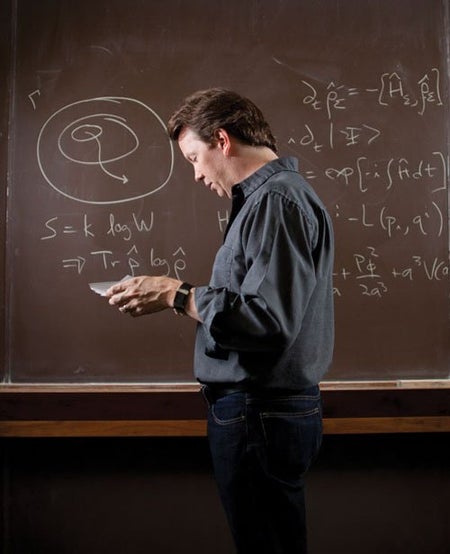
In Einstein's Universe, Airplanes and Staircases Are Time Machines
Some experimental optical clocks are so precise that even a small change in elevation or velocity makes them register the passage of time differently
John Matson is a former reporter and editor for Scientific American who has written extensively about astronomy and physics.

In Einstein's Universe, Airplanes and Staircases Are Time Machines
Some experimental optical clocks are so precise that even a small change in elevation or velocity makes them register the passage of time differently

Sean Carroll Entangles Time and Entropy
A timely conversation with physicist Sean M. Carroll about how our one-way trip from the past to the future is entangled with entropy and the origin of the universe

Spice Imports Carry Lots of Filth
Imported seasonings are rife with all sorts of extras

Boom in Finding Dwarf Planets May Be Over
The bonanza in spotting Pluto's peers nears its end

February 2014 Advances: Additional Resources
Additional resources for Advances articles in the February 2014 issue

Fact or Fiction?: Lead Can Be Turned into Gold
Particle accelerators make possible the ancient alchemist’s dream—but at a steep cost

Highlights from Neuroscience 2013
The massive annual meeting of the Society for Neuroscience brought together tens of thousands of researchers exploring the workings of mind and brain

Twitter Trends Help Researchers Forecast Viral Memes
Researchers are forecasting which memes will spread far and wide

Astronomers Puzzle Over Newfound Asteroid That Acts Like a Comet
An oddball cometlike asteroid could explain how rocky bodies develop wispy comet tails—or just add more confusion

Star's Vanishing Act Solves an Astronomical Mystery
A gigantic star in the Whirlpool galaxy has vanished, solving a supernova mystery

Why It Is Impossible to Pinpoint the 1,000th Exoplanet
The list of known exoplanets is growing so long, so fast, that it is becoming difficult to properly appreciate the new discoveries. For those of us who grew up when our solar system accounted for the only nine worlds known in the entire universe, how are we to grasp the fact that astronomers now discover [...]

Book Review: Love and Math
Books and recommendations from Scientific American

Renewable Energy's Hidden Costs
Low-carbon power depends on climate-unfriendly metals

Laser Physicists Levitate Tiny Diamonds for Quantum Experiments

A Supergiant Star Goes Missing, and a Supernova Mystery Is Solved
What once appeared to be an unremarkable star among billions in the Whirlpool Galaxy has vanished in a brilliant supernova

This Video Montage of Saturn’s Rings and Moons Is Simply Gorgeous [Video]
For more than nine years, NASA’s Cassini probe has orbited Saturn, examining its rings and moons in unprecedented detail and sending back images of things and places humans had never seen.

Curiosity Rover Samples Air for a Taste of Mars History
Early data from the rover teases out new details of Mars’s atmosphere and how it changed over billions of years

Big Baby: Astronomers Zoom In on Birth of Very Massive Star
A new telescope array reveals a gas cloud forming a star perhaps 100 times as massive as the sun

Star Entangled with Its Giant Planet Experiences Hyperactive Magnetic Cycle
The star Tau Boo’s magnetic cycle is at least 10 times faster than the sun’s

A Star's Last Breath
Supernova dust fell to Earth in Antarctic meteorites

Frothy Physics: The Math of Foams
A new mathematical model describes the complex evolution of bubbly foams

Voyager 1 Returns Surprising Data about an Unexplored Region of Deep Space

Particle Pals: Neutrino Experiment Shows Protons and Neutrons Pairing Up
The first physics results from MINERvA shed light on subtle nuclear behavior

Explore Mars for Yourself with this Billion-Pixel Image from the Curiosity Rover